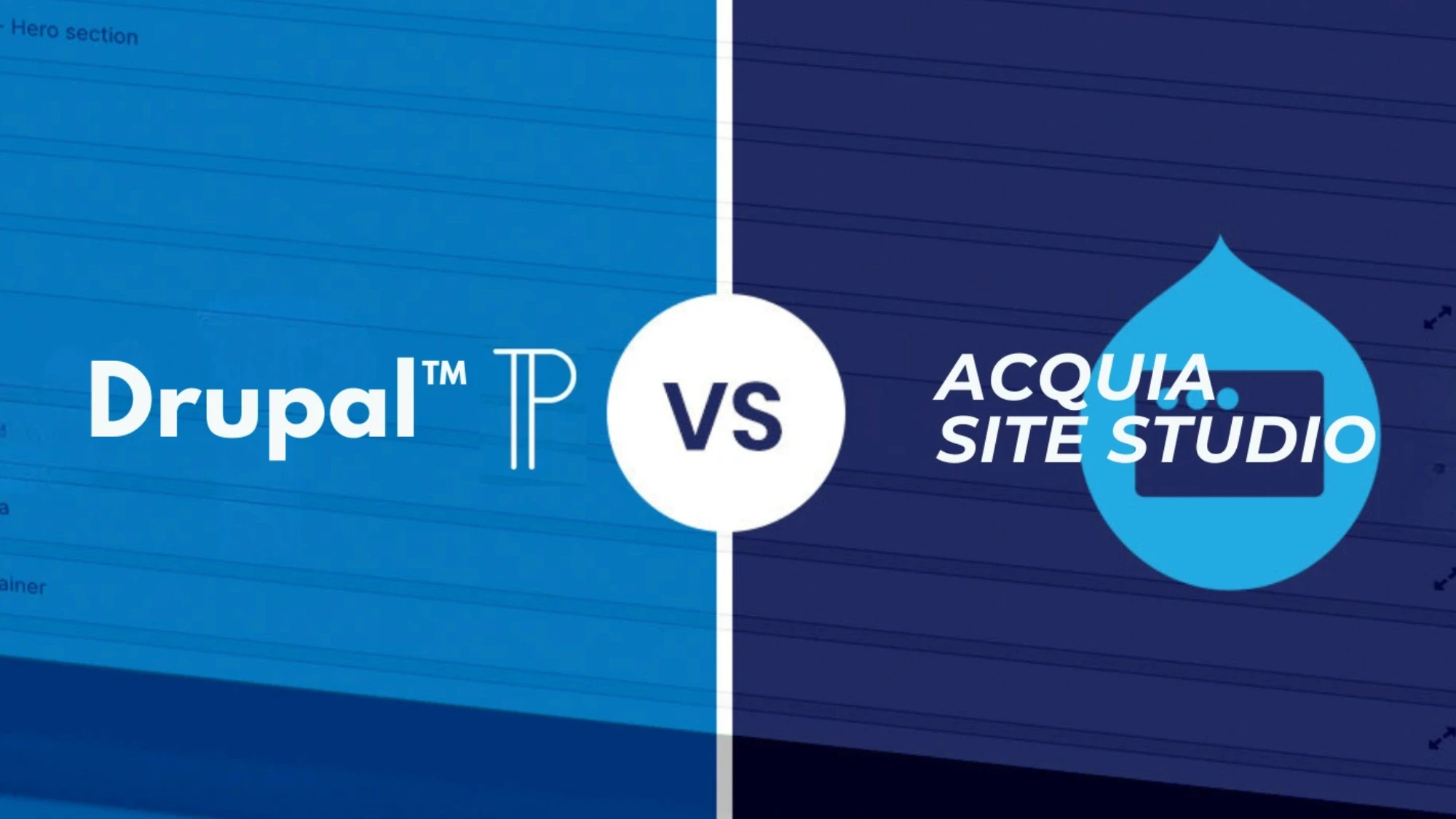In today’s fast-paced digital world, creating fresh, compelling content quickly is crucial for brands to stay competitive. Customers expect updates and new information almost instantly, and falling behind could mean losing their attention. This makes agility in content creation a priority for marketers.
Traditionally, making updates or adding new content required help from developers—slowing down the process. Now, platforms like Drupal offer more flexible, low-code solutions to empower marketing teams to build pages and manage content without heavy reliance on technical support. Two of the most popular solutions for Drupal are Paragraphs and Acquia Site Studio.
What Do Paragraphs and Acquia Site Studio Do?
Both Paragraphs and Acquia Site Studio aim to streamline the process of building rich web experiences. They give editors more control, simplify layouts, and improve the overall content creation workflow. With their drag-and-drop interfaces, both solutions offer significant improvements over older, more rigid systems.
But when it comes to choosing between them, there are some key differences to consider.
Feature Comparison: Paragraphs vs. Acquia Site Studio
Key Differences
While both Paragraphs and Acquia Site Studio are powerful, Acquia Site Studio offers a more out-of-the-box (OOTB) experience, particularly with its design and styling features. The inclusion of the Style Guide Manager (SGM) and a Visual Page Builder makes Site Studio more comprehensive for users who want a full, low-code solution right from the start.
Paragraphs can be customised to achieve similar functionality, but doing so often requires additional configuration and development work. If time and simplicity are your priorities, Site Studio’s bundled features and ease of use might be more appealing.
Choosing the Right Solution for Your Business
Deciding between Paragraphs and Acquia Site Studio really comes down to the specific needs of your organisation. Let’s take a look at a real-world example: we recently worked with a global consumer health company managing a complex digital ecosystem with hundreds of websites across 23 distinct brands, each with its own identity.
Their goal?
“Publish content on a marketing-driven schedule, not one dictated by technology.”
Given the scale, speed, and need for localisation (in multiple languages), we opted for Acquia Site Studio. The result? Faster rollouts, with the latest website (No. 358!) delivered ahead of schedule and at five times the speed of traditional development methods. Low-code was the key to success, enabling the company to get their marketing teams and partners involved quickly and efficiently.
Conclusion: Which Should You Choose?
Both Paragraphs and Acquia Site Studio are excellent tools, each with its own strengths. Paragraphs offer flexibility, but may require more upfront customization. Acquia Site Studio, with its integrated features and ease of use, is ideal for businesses that need a faster, more streamlined solution—especially for enterprise clients managing multiple sites or brands.
Ultimately, the decision isn’t just about the tool; it’s about finding the right partner to help you implement and maintain it. Whether you need the customization of Paragraphs or the agility of Acquia Site Studio, our team can help you choose the best solution to meet your specific needs. Let’s chat about how we can support your next project!
Get in touch


